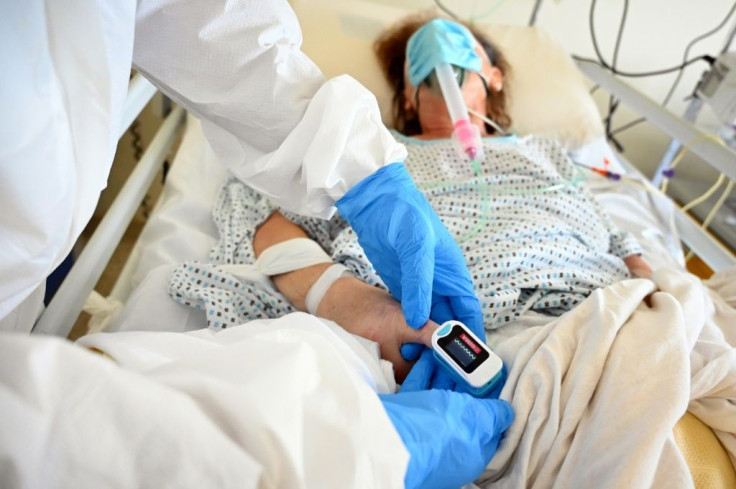US Coronavirus Death Toll Nears 70,000; Estimated Deaths Double, From 72,000 To 134,000

KEY POINTS
- The easing of social distancing and social mobility restrictions in several states has led to a surge in estimated total COVID-19 deaths
- Projected deaths have been doubled in a widely-used statistical model tracking the disease
- Experts affirm the increase in mobility will lead to an increase in mortality
Restless Americans in 17 states this week tore free from the home confinement imposed on them by stay-at-home orders to pour onto public spaces, and risk extending the duration and severity of the raging COVID-19 pandemic.
The short-sighted relaxation of social distancing and mobility restrictions comes at a time when the toll being inflicted by COVID-19 on Americans continues unabated. Deaths in the United States will exceed 70,000 on Monday, another grim total and a clear indication the disease continues to spread in the face of social distancing easing in many states.
There were 1,211,258 confirmed COVID-19 cases (up more than 23,000 from Sunday) and 69,589 deaths (up some 1,000), as of 7:13 p.m. ET Monday, based on Worldometer's tally. On Sunday at the same time, the case numbers stood at 1,188,122 (up more than 27,000) with fatalities amounting to 68,597 (up 1,100). More than 2,000 people per day have died from the disease since last week.
Health experts now warn of a spike in case numbers and deaths as 17 states have allowed their stay-at-home orders to expire, and partially reopened some of their business sectors. These states are: Alabama, Alaska, Colorado, Florida, Georgia, Idaho, Indiana, Kansas, Maine, Mississippi, Missouri, Montana, South Carolina, Tennessee, Texas and West Virginia.
In addition, eight states (Arkansas, Iowa, Nebraska, North Dakota, Oklahoma, South Dakota, Utah, and Wyoming) never issued stay-at-home orders. Taken together, these 25 states stand to form the new cradle of resurgence where the severity of the pandemic could be worsened.
Due to the relaxation of quarantine guidelines, the widely-used statistical model developed by the Institute for Health Metrics and Evaluation (IHME) at the University of Washington now forecasts 134,475 people will die of COVID-19 by August 4, which is nearly double its previous prediction of 72,433 by the same date on April 30.
The revised IHME model also predicts 3,000 daily deaths in the U.S. by June 1 compared to the death toll of 2,000 per day in last week’s model. Health experts said the sharp increases in predicted total deaths and daily deaths are tied to relaxed social distancing and increased social mobility.
"One of them is increased mobility before the relaxation, premature relaxation, of social distancing," Ali Mokdad, a professor of Health Metrics Sciences at IHME, told CNN in explaining the reasons for the higher death tolls. "We're adding more presumptive deaths as well, and we're seeing a lot of outbreaks in the Midwest, for example."
He said many variables impact infections -- like heat, testing capacity and population density -- but "the most important one is mobility."
Dr. Christopher Murray, who developed the IHME model, also told CNN right now, "we're seeing an increase in mobility that's leading to an increase in mortality, unfortunately, in the United States."
"I think the challenge for us all is to figure out what's the trajectory of relaxing social distancing on a measured pace that will protect us from big increases or even a full-scale resurgence."
The new IHME data reaffirms these business reopenings by many states come with fatal risks.
"It's simple logic," said Elizabeth Cohen, CNN's senior medical correspondent. "When you tell people, 'Hey, you can go to bars, you can get your nails done, you can go to a restaurant,' those numbers are going to go up."
© Copyright IBTimes 2025. All rights reserved.





















